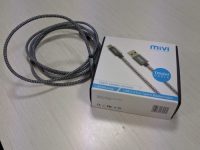The deluge of new phone brands might be pushing phone prices down in the Indian market while adding stacks of features, but it has also brought up a new problem: are many of these new brands simply rubber-stamped versions of much-vilified Chinese phones? Indeed, the biggest challenge for many of the new cellphone brands – be they the likes of Micromax, Karbonn or Olive – in the market is to convince the consumer that they are indeed offering products that are value for money.
The irony is that a lot of the tech hardware we use today is in face manufactured either in China or thereabouts (Taiwan, Korea, etc.). The whole problem about the negative “Chinese phone” perception is that until about a year ago, the only affordable and yet feature-rich devices came from dubious (and we mean really dubious) manufacturers based in China. You could get a phone with a 5MP camera, a 3 inch touchscreen, the ability to catch live television and the like for as little as Rs 6,000 from the grey market. The brand would be unpronounceable, there would be no warranty or after-sales service, and even all the much-touted features would not work as well as in better-known brands, but consumers were willing to put up with that considering the lower prices.
However, there are concerns that many of the new brands in the Indian cellphone market are actually simply putting their names on the same sub-standard (if affordable) grey market Chinese products, a notion that has been promoted by more established brand names (off the record, of course) and also by the fact that many of these products seem to be slightly-less-than-exact copies of handsets from bigger brands, coming with similar features. For instance, a number of QWERTY phones seem to have taken inspiration from the BlackBerry stable while devices like the Videocon V1675 and the Wynncom Y50 have MicroUSB charger, but also feature a pin slot where Nokia Chargers can fit in.
While some of these concerns are well-founded, an equal number are way off the base. Many of the new cellphone brands in the market might just be repackaging Chinese devices but they are throwing in their own support and warranty behind – and it is those two factors that consumers need to check out before making any investments. The fact that the phone is manufactured in China should itself not be a deterrent – it is how much the company marketing it in India is prepared to back it up with after-sales service and support. As for performance, honestly, we have seen too many big brands fall flat on their faces of late with high-priced offerings to be too critical of anyone who tries to come up with something that might underperform but does not cost the earth.
Our conclusion: If you do have the budget, we would recommend sticking with known brands – the extra bucks are worth the support and it is very early days for the newer players in the market. But if you think that a new brand is giving you a good deal and seems to have a decent support structure in place, go for it. Chinese or non-Chinese be damned!




